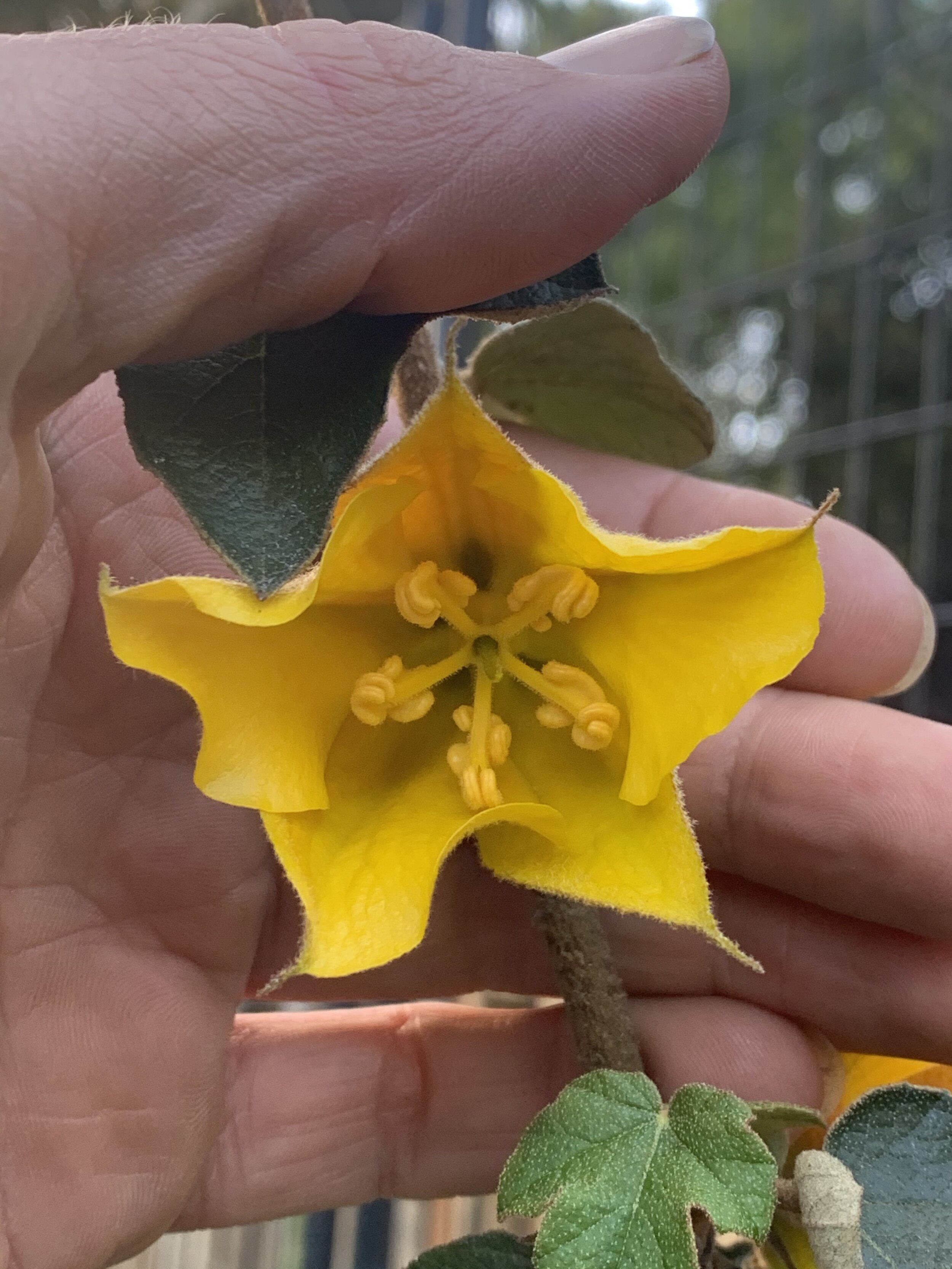Freemontodendron californicum, or California Flannelbush / Freemontia, is an ancient member of the Malvaceae family, which includes former Sterculiaceae and Bombacaceae.
Fremontia is something of a relic among California’s native species. It is a survivor from a period 60 million years ago when California was less mountainous and more tropical. Two other survivors from this same period include fan palms and ironwood trees, still found in desert climates. Freemontodendron can reportedly hybridize with Chiranthodendron pentadacylon, a fascinating tree from Mexico / Guatemala and the topic of past posts on this site.
Although its natural habitat is on rocky slopes of open chaparral or woodland between 1,200 and 6,500 feet of the coast ranges and Sierra Nevada, fremontia also does well in sunny, dry, almost sub-tropical gardens in Marin.
Freemontodendron californicum is traditional Native American medicinal plant, the inner bark's sap that was used as a topical remedy for mucous membrane irritation and for gastrointestinal upset. The wood was also used by the Californian Yokut and Kawaiisu peoples as a building and furniture material, and the bark for cordage and for nets used in acorn cache holding and snare hunting.
Don’t overwater. Excess summer water can kill this drought loving plant. A few deep waterings spaced evenly though the summer will be more then enough to establish the plant.
